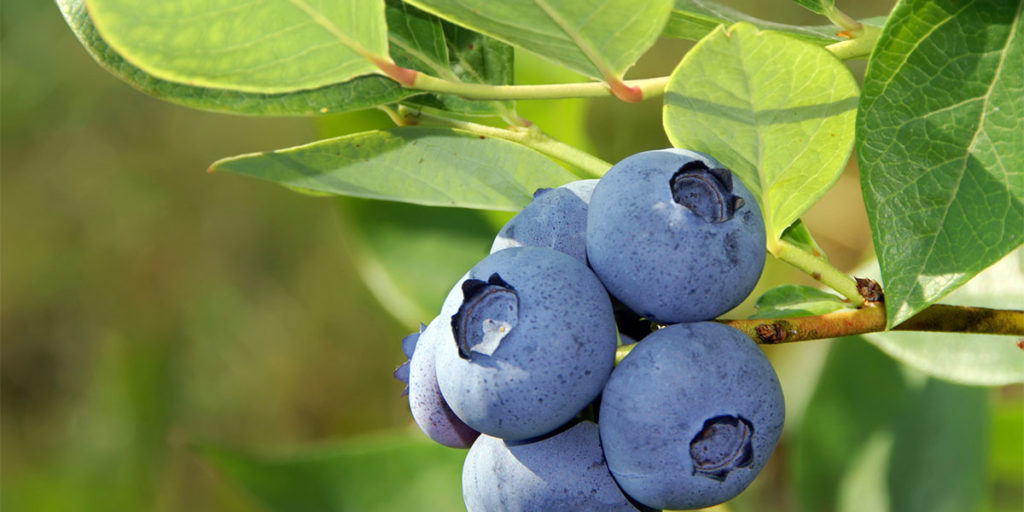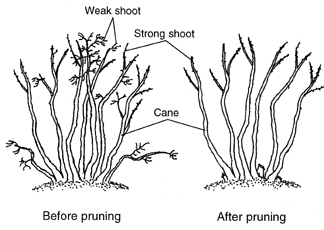Once your blueberry bush is planted and established, it will grow well for years with a little sunshine, water and occasional shot of fertilizer.

Blueberries are divided into 3 classes by fruit ripening time:
Early Season:Fruit ripens in early to mid June
Mid Season: Fruit ripens in mid July
Late Season: Fruit ripens from July into August
Growing
Plant them in the spring or fall. Blueberries grow best is full sun. They need acidic soils with a pH of 4.0 to 4.5. They like clay and other poor or rocky soils. You may need to increase the acidity in your soil to grow healthy bushes. Space blueberry bushes about three to four feet apart and one inch deeper in the soil then in the nursery.
Mix in healthy amounts of compost and other organic matter. Keep a thick layer of mulch around your blueberry bushes to eliminate weeds,and help keep the soil moist.
Water well after planting and in the first few weeks as necessary to promote good root growth. Blueberries require one inch of rainfall per week and two inches when flowering.
A new bush will produce fruit in the third year. After that, your bush will thrive for many years to come with just a little care and maintenance.
Add fertilizer once in the spring and again in late summer. The latter application will help to promote buds for next year.
Pruning
Blueberry bushes should be pruned every year in order to keep them producing high yields of good quality fruit. Prune the plants when they are fully dormant during the late winter or early spring (January-March). For the first two years after planting, simply remove any dead branches and all weak, spindly growth. For plants that have been established for three years or more follow these four steps:
1. Prune out any weak, low-growing or diseased canes.
2. Prune out all canes that are over six years old (these are usually the thickest canes, which are gray in color with peeling bark). Blueberry canes tend to be less productive once they get more than six years old and should be pruned out in favor of younger, more productive canes. Cut the old canes to the ground level unless new cane growth has been sparse, in which case leave a four to eight inch stub above the ground. New canes may sprout from these stubs.
3. Thin the remaining canes, leaving those with the most vigorous shoot growth (long, thick branches with good fruit buds). Leave six to seven vigorous two to five-year-old canes and two or three one-year-old canes per bush. A mature blueberry plant should have six to ten healthy canes varying in age from one to six years old.
4. Remove any weak fruiting shoots on the remaining canes, especially those under six inches in length. Most fruit is produced on vigorous one-year-old shoots on healthy two to five year old canes. The fruit buds on these shoots are large and teardrop shaped. Each bud will produce a cluster of five to eight flowers. The shoots also have smaller, pointed buds that will produce leaves.

Pollination
High bush blueberries varieties are self fertile but they will produce better and more reliable crops with another variety for pollination.


No comments yet, be the first to leave one!
You must be logged in to post a comment.